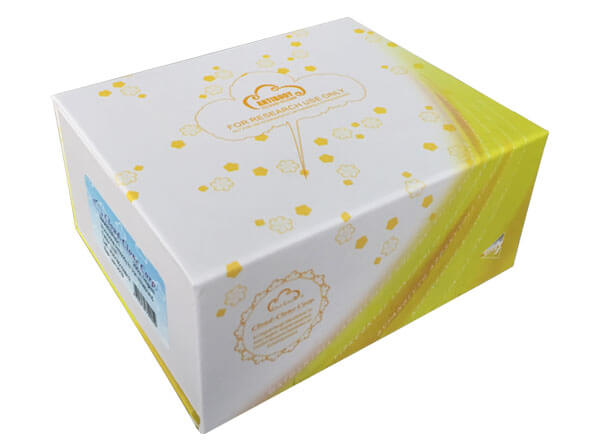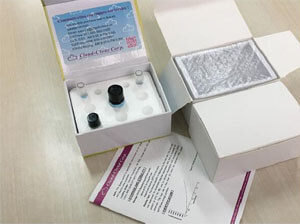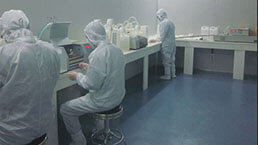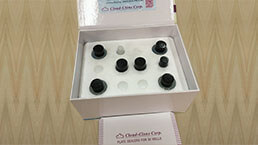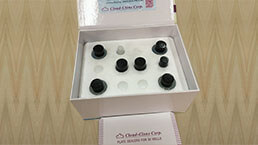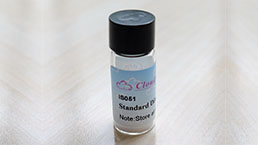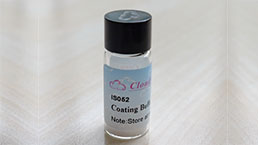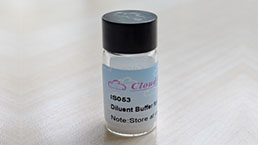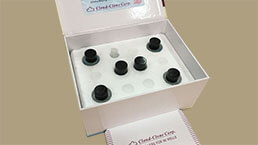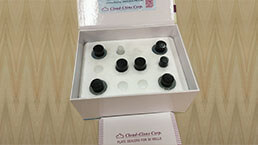ELISA Kit DIY Materials for Interleukin 33 (IL33) 

DV27; C9ORF26; IL1F11; NFHEV; Interleukin-1 Family, Member 11; Nuclear factor from high endothelial venules
- UOM
- FOB US$ 1,197.00 US$ 1,995.00 US$ 3,591.00 US$ 6,983.00 US$ 11,970.00
- Quantity
Overview
Properties
- Product No.KSB980Hu01
- Organism SpeciesHomo sapiens (Human) Same name, Different species.
- ApplicationsMain materials for "Do It (ELISA Kit) Yourself".
Research use only - Downloadn/a
- CategoryCytokineInfection immunity
- Reagent Contents Capture Antibody, Detection Antibody, Standard, Streptavidin-HRP, TMB Substrate, 96-well Plate
- Detectable SampleSerum, plasma, tissue homogenates, cell lysates, cell culture supernates and other biological fluids.
- Applicable PrincipleDouble-antibody Sandwich ELISA for Antigen Detection
- Detectable Range15.6-1,000pg/mL
- Applicable Sensitivity6.4pg/mL
Sign into your account
Share a new citation as an author
Upload your experimental result
Review

Contact us
Please fill in the blank.
Specifity
The Abs in the kit have high sensitivity and excellent specificity for detection of Interleukin 33 (IL33). No significant cross-reactivity or interference between Interleukin 33 (IL33) and analogues was observed.
Usage
1. Coat the plates with 100μL per well of working solution of Capture Antibody.incubate overnight at 4°C or incubate at 37°C for 2 hours.
2. Aspirate and wash 1 time.
3. Block the plates with 200 μL per well of working solution of Blocking Buffer. Incubate at 37°C for 1.5 hours.
4. Aspirate and wash 1 time. The plates are now ready for sample detection, the protocol is the same as regular ELISA.
Storage
Antibodies, Standard and Streptavidin-HRP should be stored at -20°C. TMB should be stored at 4°C. 96-well Plate could be stored at room temperature. The contents are valid for twelve months. They are stable for one month after opening when stored at 4°C.
Support pack
Giveaways
Increment services
Citations
- Interleukin-33, matrix metalloproteinase-9, and tissue ınhibitor of matrix metalloproteinase-1 in myocardial infarctionPubMed: PMC3604606
- CXCL13 blockade attenuates lupus nephritis of MRL/lpr micePubMed: 26456520
- Epithelial Cell-Derived Cytokines Contribute to the Pathophysiology of Eosinophilic Chronic RhinosinusitisPubmed:26540312
- The Expression and Regulation of Interleukin-33 in Human Epidermal Keratinocytes: A New Mediator of Atopic Dermatitis and Its Possible Signaling Pathway.pubmed:27348082
- IL-33 circulating serum levels are increased in patients with non-segmental generalized vitiligopubmed:27388717
- Chrysin Protects Rat Kidney from Paracetamol-Induced Oxidative Stress, Inflammation, Apoptosis, and Autophagy: A Multi-Biomarker Approach. pubmed:28134775
- Association of IL-33, IL1RL1 gene polymorphisms with serum IL-33 levels and risk of asthma in adults and asthmatic bronchitis in children (Chinese)10.1080:13102818.2018.1471361
- Role of IL-33 and ST2 signaling and inflammatory responses in non-small cell lung cancer172341
- Group II innate lymphoid cells and microvascular dysfunction from pulmonary titanium dioxide nanoparticle exposurePubmed: 30413212
- Interleukin-33 serum levels in postmenopausal women with osteoporosisPubmed: 30846811
- Tumor-Derived Lactic Acid Contributes to the Paucity of Intratumoral ILC2sPubmed: 32101749
- Relationship of microbial profile with airway immune response in eosinophilic or neutrophilic inflammation of asthmaticsPubmed: 32141256
- Qingfei oral liquid downregulates TRPV1 expression to reduce airway inflammation and mucus hypersecretion injury caused by respiratory syncytial virus infection …
- Aggravation of Airway Inflammation in RSV-Infected Asthmatic Mice Following Infection-Induced Alteration of Gut Microbiota
- Inhibition of NF-κB/IL-33/ST2 Axis Ameliorates Acute Bronchiolitis Induced by Respiratory Syncytial Virus34395633
- Elevated Levels of IL-33, IL-17 and IL-25 Indicate the Progression from Chronicity to Hepatocellular Carcinoma in Hepatitis C Virus PatientsPubmed:35056005
- Dexmedetomidine Attenuates Hyperalgesia Induced By Brachial Plexus Root Avulsion By Restoring The GLT-1 Function Via PKA Signaling



